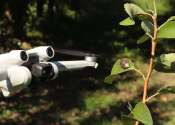Computer model demonstrates desire for social proximity improves flight routes among pigeons
A new study conducted by Dr. Edwin Dalmaijer, a cognitive neuroscientist at the University of Bristol, UK, looked at the social influences on pigeon flight routes. Comparing the flight patterns of pairs of pigeons to a computer ...









